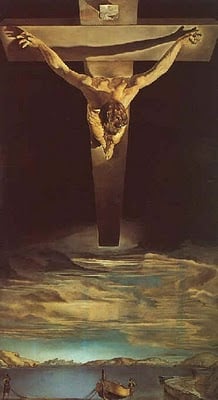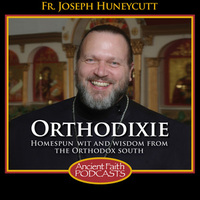 The following is from AOL News. Call me old-fashioned but, for this post, I’ll let St Paul have the final word.
The following is from AOL News. Call me old-fashioned but, for this post, I’ll let St Paul have the final word.
(June 27) — The crucifix is the defining symbol of Christianity, a constant reminder to the faithful of the sacrifice and suffering endured by Jesus Christ for humanity. But an extensive study of ancient texts by a Swedish pastor and academic has revealed that Jesus may not have died on a cross, but instead been put to death on another gruesome execution device.
Gunnar Samuelsson — a theologian at the University of Gothenburg and author of a 400-page thesis on crucifixion in antiquity — doesn’t doubt that Jesus died on Calvary hill. But he argues that the New Testament is in fact far more ambiguous about the exact method of the Messiah’s execution than many Christians are aware.
“When the Gospels refer to the death of Jesus, they just say that he was forced to carry a “stauros” out to Calvary,” he told AOL News. Many scholars have interpreted that ancient Greek noun as meaning “cross,” and the verb derived from it, “anastauroun,” as implying crucifixion. But during his three-and-a-half-year study of texts from around 800 BC to the end of the first century AD, Samuelsson realized the words had more than one defined meaning.
Gunnar Samuelsson says the New Testament is far more ambiguous about the exact method of Jesus’ execution than many Christians are aware.
This iconic image of Christ dying on the cross may be misleading, according to theologian Gunnar Samuelsson, who says crucifixion was more rare than commonly thought.
“‘Stauros’ is actually used to describe a lot of different poles and execution devices,” he says. “So the device described in the Gospels could have been a cross, but it could also have been a spiked pole, or a tree trunk, or something entirely different.”
More here.
Jehovah’s Witnesses, of course, love this thesis!
A Roman Catholic responds.
Mr Samuelsson said: “That a man named Jesus existed in that part of the world and in that time is well-documented. He left a rather good foot-print in the literature of the time.
“I do believe that the mentioned man is the son of God. My suggestion is not that Christians should reject or doubt the biblical text.
“My suggestion is that we should read the text as it is, not as we think it is. We should read on the lines, not between the lines. The text of the Bible is sufficient. We do not need to add anything.” [Source]
‘There are simply no description of Jesus or anyone else in that time being crucified’ Samuelsson says, ‘the whole thing is based upon imagination and myth’. [Source]
Some discussion here.
St Paul: I was determined that while I was with you I would speak of nothing but Jesus Christ and Him crucified. (1 Corinthians: 2:2)











